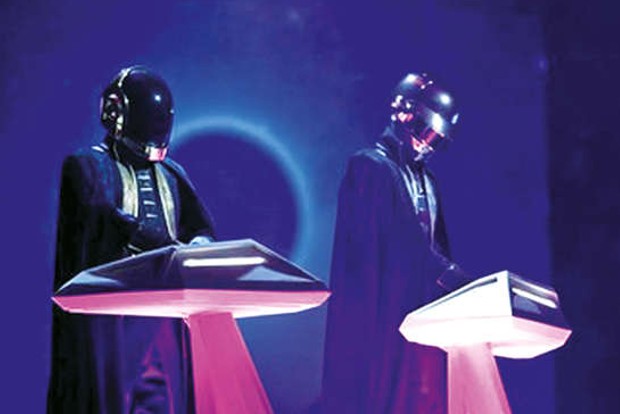Begin typing your search...
Not just techno: Dive into the history of electronic music
Electronic music is sometimes labeled robotic and one-dimensional, music that can only be enjoyed with the help of alcohol in a dark nightclub. This cliché extends to the idea that the genre originated in the 1980s when synthesizers and drum machines became integral to pop music.

New York
But electronic music has had a long and diverse influence on the modern musical canon, a topic explored by the exhibition “Electro. From Kraftwerk to Techno.” Now on show at the Kunstpalast in Dusseldorf — the city that incubated electronic music pioneers Kraftwerk — the exhibition maps the more than 100-year history of electronic music from its very beginnings to compositions by artificial intelligence.
The first experiments with electronic sound generators took place as early as the mid-late 19th century and culminated in the development of electromechanical pianos that predate the electronic keyboard. One of the most famous early electronic instruments was the “etherophone,” later called the “Theremin” after its inventor Leon Theremin.
Developed in the 1920s in Russia, the sound seems to emerge as if by magic: Invisible electrical oscillations created between two antennas can be played with a hand as it bends the pitch.
Soon after that, Friedrich Trautwein created the “trautonium,” a precursor to the electronic synthesizer — played here with a wire instead of keys — that has also been essential to electronic music. So too was the electromechanical Hammond organ developed in 1935 as an alternative to a church organ.
It became an essential part of blues, jazz, and funk music. In the postwar period, US composers such as John Cage and Steve Reich were pushing the boundaries of electroacoustic music in America.
Meanwhile, in Europe, Karlheinz Stockhausen was pioneering electronic sound experiments using ring modulators and Hammond organs, among many else, in the Studio for Electronic Music in Cologne.
In the 1970s, the torch was passed on to Düsseldorf, where the band Kraftwerk, in their Kling-Klang studio, developed a sound that has decisively shaped electronic music to this day.
While avant-garde rock and Krautrock bands such as Can or Neu! infused keyboards into their monotonous “motorik” sound, it was Kraftwerk that gave the genre worldwide popularity. Artists as diverse as David Bowie, Afrika Bambaata, Joy Division, New Order, Depeche Mode, and Blur were inspired by the German electro band, whom the New York Times once described as “the Beatles of electronic dance music.”
“Think of the band as a lab technician synthesizing the DNA that provided the code for rap, disco, electro-funk, new wave, industrial and techno,” wrote the newspaper. French artists were also central to the electronic music renaissance. Jean-Michel Jarre brought the synthesizer to the mainstream with groundbreaking albums like “Oxygène” before Parisian artists like Laurent Garnier, Air, and Daft Punk popularised the French House genre.
Back to Dusseldorf, where bands like Kraftwerk and Neu! made the city synonymous with early electronic music worldwide, “Electro. From Kraftwerk to Techno” is now paying tribute to the rise of a groundbreaking musical direction.
The more than 500 exhibits at the Düsseldorf Kunstpalast include instruments, homemade sound generators, photographs, audio recordings, videos, and graphic design. The exhibition was first held at the Musée de la Musique in Paris. It was also created in close collaboration with Kraftwerk co-founder Ralf Hutter.
Visit news.dtnext.in to explore our interactive epaper!
Download the DT Next app for more exciting features!
Click here for iOS
Click here for Android
Next Story



